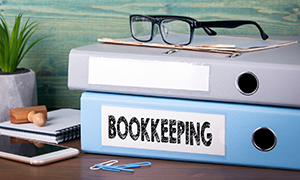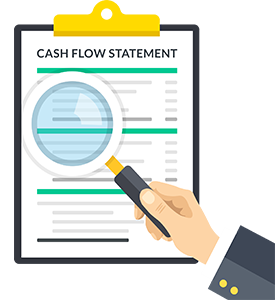 Home-based businesses can be financially rewarding and provide a certain amount of flexibility with your day-to-day schedule. Here are some tips to keep your business running at full steam.
Home-based businesses can be financially rewarding and provide a certain amount of flexibility with your day-to-day schedule. Here are some tips to keep your business running at full steam.
- Stay on top of accounts receivable. It’s easy to get caught up with fulfilling your business obligations while invoices you’ve sent out go unpaid. Agree to payment terms in advance with new customers and immediately – but politely – communicate with them as soon as they miss a payment deadline. Keep current with regular invoicing and collections.
- Keep your bookkeeping records up-to-date. You may not realize you have an unpaid invoice that’s several months old unless your bookkeeping is up-to-date. Keeping accurate books involves more than balancing your bank accounts once a month. In addition to your monitoring your bank accounts, also consistently look at your accounts receivable, accounts payable, any debts (credit card, car loans or other borrowings), and all money you invest in your business. Ask for help if you don’t have enough time to do the bookkeeping yourself, or if you need help properly setting up your bookkeeping software.
- Check on permit requirements. Depending on what type of home-based business you have, you may be required to obtain various permits, licenses or other registrations. If you have not already done so, check with your town or city for local requirements. The Small Business Administration is also a good source to research information on permits.
- Get insured. Obtain adequate insurance for the type of operation you’ll be running. Besides the insurance required for business activities, you might consider adding a rider to your homeowner’s policy for liability protection should an accident occur on your property.
- Stay on top of technology. While you may not need a top of the line computer, be sure that the technology equipment you use can handle the bandwidth of everything you’ll ask it to do, including video calls, software apps and data storage. Also consider scheduling a time for your internet provider to visit your home to make sure everything is in working order and your security protocols are top notch. Have a back-up plan in place for when a device breaks down, including where you’ll go to have it repaired.
- Cash in on tax breaks. Take advantage of the tax breaks available to home-based businesses, including deductions for supplies, equipment and vehicle expenses. You may even be able to deduct the cost of your home office, including a pro-rated amount of your real estate taxes and utilities, if certain conditions are met.
- Set aside money to pay your taxes. Ask for help to calculate how much of your incoming cash you should be setting aside to pay your federal, state and local taxes. Consider opening a separate bank account to transfer your tax money into.
 When tracking and planning your business objectives, it’s easy to focus your analysis on two reports — the income statement and balance sheet. But one of the primary keys to your business’s success relies more on how you handle the money flowing in and out of the business. The appearance of a solid profit can hide a lurking cash flow problem.
When tracking and planning your business objectives, it’s easy to focus your analysis on two reports — the income statement and balance sheet. But one of the primary keys to your business’s success relies more on how you handle the money flowing in and out of the business. The appearance of a solid profit can hide a lurking cash flow problem.
Here are practices to help you give your cash flow the attention it deserves:
- Understand your cash position. Start with simply getting in the habit of monitoring your bank account activity daily to watch for mistakes or unforeseen charges. Then look at each business process that involves cash — purchasing, inventory, collections and payroll are good examples. Consider extending terms for paying vendors, establishing shorter terms for customers to pay and implementing a review process to ensure accurate payroll calculations. Also explore opportunities to turn over your inventory faster.
- Create a cash flow statement forecast. With your knowledge of cash, create a forward-looking statement of monthly cash flow. It will reflect the ebbs and flow of cash throughout the year and identify times of cash crunch. You can then see the impact of changes you are making on your company’s cash position.
- Identify relevant ratios. There are many helpful cash flow ratios. Identify ratios that are especially helpful to your business. Have debt? Consider the cash flow coverage ratio (operating cash flow ÷ by debt) to help plan for scheduled debt payments. Making a lot of capital purchases? Use the free cash flow calculation (operating cash flow – capital expenditures) to determine how much cash will be left over after the purchases.
- Build in some contingencies. Most businesses experience seasonality. Understanding your business cycles can help you strategically manage cash in high cash months to cover shortfalls that come in low cash months. Set up a line of credit so it’s available in the case of an emergency, or as a bridge during short-term liquidity needs. A line of credit only charges interest only when used, so it’s a perfect tool to have at your disposal.
- Watch for hidden cash hijackers. Oftentimes, large cash expenditures can be hidden on your income statement or balance sheet. A few examples are payments on capital purchases, debt obligations, dividends, guaranteed payments to partners and taxes. Income taxes, when not accounted for correctly, can cause a twofold problem — a large lump sum that is due in a short amount of time, plus a larger obligation to account for going forward. Don’t wait until the end of the year to project your tax provision.
- Appoint someone to manage cash. As with many business processes, important details can fall through the cracks if there is not clear accountability as to who is responsible for the task. So assign yourself or someone you trust to manage the company’s cash flow.
When businesses fail, it’s usually because they run out of money. By making cash flow a central part of your business plan, you greatly reduce this risk.